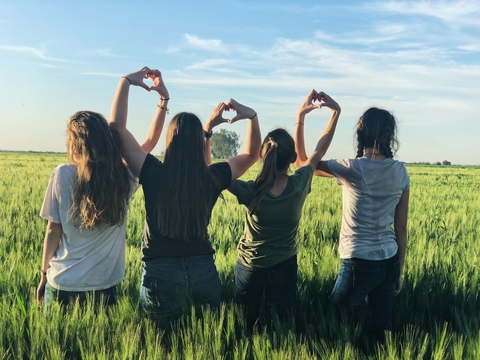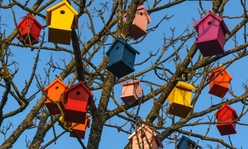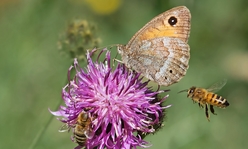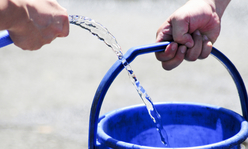Each year, the Minnesota 4-H State Ambassadors select a service theme to engage all Minnesota 4-H youth in learning about a community issue and taking steps to make a positive, collective impact.
The theme is determined by input collected from youth at leadership conferences, 4-H staff across the state and the state ambassadors.
2023-2024 service theme
The 2023-2024 statewide service theme is “Conservation of Natural Resources.” This encourages youth to think about their impact on the world around them.
Natural resources are all around us, and there are different ways to help conserve them. The state ambassadors have created four environmental focus areas for every season that can be completed by 4-H clubs and groups, or individual youth and families to help in these conservation efforts and positively impact the world around them.
Additionally, 4-H’ers are encouraged to think of other ways to make a positive impact and plan a project that meets their community needs. This service learning plan it out guide might help.
Tell us about your service!
Participating in the monthly challenges is optional, but highly encouraged to make the statewide effort.
Those participating in monthly challenges will be recognized.
Seasonal challenge details
Composting
The first challenge for fall is composting. Composting can help add nutrients back to the soil and reduce waste. Composting can also help plant growth, conserve water and prevent soil erosion. You can compost many things, from food and vegetable scraps to coffee grounds and shredded paper.
Building birdhouses and feeders
The second challenge for fall is building birdhouses and feeders. Birds are on the move for warmer weather, and some even stay here with us year-round. As the weather is getting colder, think about building a birdhouse. Explore all the different types of birds around us and how you can provide them with a safe and successful home.
Learn more about nest boxes and nest structures.
Birds will eat a variety of different things throughout the year. You can learn about the different birds you can attract with the various feeds. The Minnesota DNR provides bird feeding tips.
Energy use
In the winter, a lot of energy is used to heat homes and businesses. Think about how much energy you use daily and learn how to lower it. Be aware of where you are using energy and how to use renewable energy.
Some simple ways you can lower your energy usage include:
Turning off lights when not in use.
Turning your thermostat down in the winter and turning it up during the summer.
- Washing clothes in the washing machine with cold water.
Resources
- EPA greenhouse gas equivalencies calculator
- EPA carbon footprint calculator
- EPA reduce the environmental impact of your energy use
- The Environment Excuse: My carbon calculator
Plastic use
While tracking your energy consumption, you can also track your plastic usage. Some plastics are not recyclable and will end up in landfills. These plastics can then end up in the environment, like lakes or forests.
You can limit your plastic use by cutting back on single-use plastics and changing plastic bags for paper or reusable bags. You can also track your plastic use by noting it or putting the plastics into a bag or jug.
Join the Plastic-Free Challenge provided by Hennepin, Ramsey and Washington counties. At the end of the challenge, you will be able to see just how much plastic you can use, and you can think about how you want to reduce it.
With all the plastic you collect, you can make amazing sculptures in the 4-H Plastic Sculpture Challenge.
Soil conservation
To go in hand with composting from the fall, the spring challenge is soil conservation. Healthy soil can help increase plant life by cycling nutrients like carbon, nitrogen and phosphorus.
A compost mixture is one easy way to help with soil conservation.
Farmers, property owners and other land stewards can maintain soil health by reducing chemicals in plants and crops (like pesticides), creating buffer strips, making windbreaks with trees and plants and utilizing crop rotation.
Learn more about soil health and management.
Pollinators
Plants also need pollinators to grow. The pollinator population has experienced a significant decrease recently. Identifying pollinators in your area may help you narrow down what kind of project you want to do. The DNR provides information on Minnesota pollinators.
You can help by planting pollinator gardens and limiting pesticide use. Building pollinator nesting sites can draw pollinators into your area and plants. You can plant different flowers, trees, and shrubs native to your area.
You can both benefit soil conservation and pollinators by planting cover crops. Cover crops can provide shelter and diversity for pollinators while also helping conserve soil by acting as a windbreaker.
Water conservation
Water conservation is one of the topics for summer. The best way to conserve water is to be aware of when you use water.
Changing your shower heads and faucets is a simple way to conserve water at home. Older showerheads and faucets use more water than newer ones. The new showerheads and faucets use aeration and restrict the amount of water that can come out.
Another way to conserve water is to check for leaks. Leaks can cause hundreds of gallons of water to go to waste, not to mention a lot of damage. You can also be cautious of how much you irrigate your yards and plant native, drought-resistant plants.
Other resources
Aquatic life
Summer is also a great time to enjoy our many lakes. As you take your watercraft in and out of the water, make sure that it does not carry any unwanted guests.
Invasive species are in about 8% of Minnesotan lakes. Invasive species can disrupt the natural ecosystem and often out-compete native species.
Be sure to spray off your watercraft and trailer before getting into the water and after getting out. You should drain all the water from your watercraft, tank, motor and live well after leaving the water. Also, throw away any unused bait. The Minnesota DNR provides further guidance on prevention methods.
Learn more
The statewide service project aims to help achieve the United Nations Sustainable Development Goals and meet critical health, education, human service, human rights and environmental needs. This year’s topic specifically focuses on building awareness and inspiring service, advocacy, and philanthropy for the environment, specifically:
Contact
Jacquie Lonning, civic engagement and leadership director, jlonning@umn.edu, 612-624-9117
Reviewed in 2024






